I had a great Thanksgiving with my friends and family, and hope you did too. So, today I want to shift away from the heavy discussions of utopia, dystopia, heterotopia and so on and offer something fun. You might think that there is a mismatch between the title and the subtitle of this post. But I find reading and watching horror relaxing. I do not think I am alone. Just as many podcast listeners binged on true crime to keep their minds off the lockdowns during COVID, people need fantastic monsters to keep real monsters (war, poverty, illness, political unrest) at bay. So, here is a little exploration of the genre of Lunar Gothic, plus a list of recommended reading. Since I am finishing an academic article on this very subject, I would much appreciate suggestions for additional texts to add. And before we start, spoilers alert, as I will be summarizing the novels I discuss.
So, what is Lunar Gothic? This is the hybrid genre situated at the intersection of SF and horror. It is a subspecies of dark SF, set on the Moon.
It would seem that our satellite is the least appropriate setting for mysteries of the unknown. An abandoned spaceship or a ruined space station - sure, we can imagine all kinds of monsters lurking in the shadows. But the Moon is the best explored body in the Solar System and the only one where humans have actually landed. And yet, in such novels as Sharman DiVono Blood Moon (1999), Johan Harstad’s 172 hours on the Moon (2012), Rick Chesler’s Luna (2013), Peter Clines’ Dead Moon (2019), and many, many more, the Moon becomes a stage for familiar Gothic tropes – ghosts, zombies, doppelgangers, and dark labyrinths. And I have not even mentioned movies such as Moon (2009) and TV series, such as the South Korean The Silent Sea (2021).
The reason for this lies in the double cultural meaning of the Moon: as the focus of a long tradition of mysticism predating science; and as the setting for the greatest triumph of space technology. The Moon is a monstrous space, a cultural oxymoron, in which the boundaries of science and superstition, knowledge and fear are mapped out and (re)negotiated.
As Bernd Brunner writes in his cultural history of our satellite:
“The importance of the moon has less to do with its proximity to Earth than with its centrality in the human imagination. The moon’s face has been known to inspire admiration, sadness, joy, even longing, and under certain conditions, fear…Close, yet really far away – the moon is a paradox. And when we study it, we are studying an aspect of ourselves” (Brunner 2010, 74).
The Moon is the space-age equivalent of the haunted castle that defined the early tradition of Gothic: “The major locus of Gothic plots, the castle, was gloomily predominant in early Gothic fiction. Decaying, bleak and full of hidden passageways” (Botting 2014, 2). This is the Moon of Lunar Gothic, except that the past encoded in its “hidden passageways” is the geological past of our own planet where life’s precarious existence is shadowed by the specter of extinction. The Moon is a witness to profound geological upheavals of the past that had almost destroyed the emerging life on Earth The family trauma that so often lies at the heart of Gothic is replayed on a cosmic scale in the history of Earth and its satellite.
The first novel of Lunar Gothic is also one of the first novels of SF. H. G. Wells’ The First Men in the Moon (1901) depicts the Moon populated by a strange ant-like race of aliens. The vivid imagery of this novel is almost Lovecraftian: the Moon is tunneled by dark subterranean mazes, the “huge, shadowy caverns”, presided over by the grotesque Grand Lunar, “an opaque, featureless bladder with dim, undulating ghosts of convolutions writhing visibly within” (Wells 326). It ends on a tragic note, as Cavor, the inventor of a gravity-shielding substance, is stranded on the Moon. His last broadcast ends abruptly, and Bedford, his companion, is haunted by visions of his death:
For my own part a vivid dream has come to my help, and I see, almost as plainly as though I had seen it in actual fact, a blue-lit shadowy disheveled Cavor struggling in the grip of these insect Selenites, struggling ever more desperately and hopelessly as they press upon him, shouting, expostulating, perhaps even at last fighting, and being forced backward step by step out of all speech or sign of his fellows, for evermore into the Unknown—into the dark, into that silence that has no end....(Wells 342).
Another classic of Lunar Gothic, published roughly at the same time as Wells’, is Jerzy Żuławski’s trilogy Trylogia księżycowa (1901-1911) translated as The Lunar Trilogy. It is a towering achievement of SF that profoundly influenced the genre’s development in Eastern Europe, though it was unknown in the West until recently.
The trilogy is composed of three novels: Na Srebrnym Globie (On the Silver Globe), Zwycięzca (The Conqueror), and Stara Ziemia (The Old Earth). The novels describe the first disastrous expedition to the Moon, the establishment of a colony, and the eventual return of lunar colonists of them back to humanity’s home. A rich and complex text, The Lunar Trilogy combines elements of bio-horror, adventure, and dystopia.
When the one-way vessel with the five explorers crashes on the Moon , the Polish narrator Jan Korecki describes the horror that awaits them on the lifeless and frozen planet: “That white light makes everything around us look mysterious and lifeless” (23). Two of the expedition members eventually die of the injuries sustained in the landing, and the only woman, Martha, who joined in order to be with her lover Thomas Woodbell who eventually also dies, becomes distraught and apathetic, while the two remaining men, Jan Korecki and Peter Varadol, vie for her affection. This rivalry becomes important as Martha is the Eve of this horrifying world. Eventually the stunted descendants of her union with Varadol populate the dark side of the Moon and create a superstitious and violent society, preyed upon by the monstrous Moon race of the Szerns.
But before the three surviving members of the original expedition arrive at the dark side where life exists, they have to traverse the barren craters and “the infinite deadly plain” of the airless Moon. The vivid descriptions by Żuławski rival Wells’, but as the odyssey progresses, they become more and more detached from the actual science of selenography, descending into the poetics of nightmare. Particularly interesting are the frequent references to blood. This literalization of the imagery of the “blood Moon” is ubiquitous in Lunar Gothic , as the superstitious belief that the Moon regulates the female menstrual cycle is projected upon the barren landscape of rocks and regolith:
“At the same time, the light on the Moon changed from orange into red, and it looked like someone poured blood on the dark desert in front of us” (82).
And in a final Gothic twist, ghosts seem to materialize on the Moon, as Thomas Woodbell, before dying, claims to have seen the mutilated corpses of the other spacemen who died before him walking in the ruined city. The experience convinces him that the Moon is where science and superstition, rational and irrational, coexist:
“I know…you all believe, and I used to believe…once…that the only truth is the knowledge…based on experience which can be put in mathematical formulas but there are things that are inconceivable and strange…” (120).
Both time and space become distorted and monstrous on the Moon. The narrator constantly refers to the difficulty of measuring and experiencing temporality on the lunar surface where time passes “without end, without change, without seasons, with no years or months…” (23).
1969 was a pivotal year for Lunar Gothic. One would expect that after the triumph of science and technology embodied in humans landing on another celestial body, the scientific ethos would prevail in fictional representations of our satellite. But in fact, the opposite happened. Just as fictional moon landings become more technologically plausible, they also increasingly emphasize the imagery of horror, disorientation, claustrophobia and madness.
Sharman DiVono’s Blood Moon (1999) starts with a mystery: a Far Side moonbase under construction falls silent, and a team led by Po Tseng, a NASA scientist, is sent to investigate. The team finds most of crewmembers dead, gruesomely murdered, and the only survivor, Bob Faden, clearly insane. Tseng is conducting the investigation, while gradually losing contact with the NASA headquarters and trying to keep her own people from succumbing to the horror of what they uncover.
Despite the technological paraphernalia of the investigation, from the very beginning there are hints of the supernatural. Tseng and her crew find the base disfigured with satanic and occult symbols and inscriptions. Of course, it is possible that this was part of the insanity that struck the original crew, and this is how the investigators originally regard it: “Satanic cults. Ritual killing” (89). But this rationalistic explanation is hard to reconcile with the clouds of flies infesting the supposedly sterile base and with the horrifying injuries found on the dead bodies, some of them appearing self-inflicted
As the investigation continues, the supernatural creeps in. As one of the characters, a believer, explains the dilemma the crew faces:
“Did insanity cause Faden to seek out and experience the powers of darkness through a Ouija board, or did seeking out and experiencing the powers of darkness result in insanity? The result is the same in both cases; however, the first scenario does not depend on faith in the existence of beings whose plane of existence is the spiritual realm, and the other does” (403).
Presented in this way, the novel seems to be poised on the cusp of what Tzvetan Todorov called “the fantastic”: hesitation between a natural and supernatural explanation of the events. But at the end, the hesitation is resolved in favor of the supernatural as the Moon turns out to be haunted by the spirits not just of the dead astronauts but by numberless ghosts trapped in its magnetic field. Tseng’s crew solves the mystery not by ratiocination but by resorting to a Ouija abord communication with the dead, catching “glimpses of a myriad of horribly disfigured corpses” infesting the Far Side (420). The Gothic imagery of the first half of the book where Tseng’s crew investigates the blood-splattered and abandoned moonbase is literalized in the second half where the phantoms of their fear become real.
Blood Moon reverberates with echoes of the moon landing (the shuttle, for example, is called the Aldritch). The echoes are even stronger in Johan Harstadt’s 172 Hours on the Moon (2008), a popular YA novel by a Norwegian writer. To kickstart a new space race, NASA engages in a publicity stunt, with three randomly chosen teenagers staying in a hitherto classified moonbase built in the 1970s with the escort of professional astronauts. The base called DARLAH-2 is the future of the past: a sterile techno environment, “old and futuristic at the same time” (180).
As communication and life support systems begin to fail and the adults are dying, flashbacks to the Apollo Program reveal that the program encountered the same danger that is plaguing DARLAH-2: doppelgangers. Mia, one of the teens and the Final Girl of this techno-horror script, encounters her double as she is trying to escape to DARLAH-1. Eventually, she makes it back to Earth alive, but the Mia who comes back is not the same Mia who left. Even though the focalization through Mia seems to indicate that she escapes the Moon, the last chapter reveals that she in fact died in space and the creature who comes back unleashes a plague of doppelgangers. “Four identical copies of Mia moved from room to room with such ruthless efficiency that before long there were legions of copies sweeping through the hotel”, killing everybody in sight (350).
The novel ends right there, with no explanation of what these creatures are. Aliens? Selenites? We do not know. The abrupt ending serves a similar purpose to the sudden shift at the end of Blood Moon: undermining the rationalistic ethos of SF without providing any coherent alternative explanation. Lunar Gothic derives its power from confounding the reader’s generic expectations rather than from embracing the full supernatural modality of traditional Gothic and horror.
In other novels of Lunar Gothic, the Moon is inhabited by zombies (Peter Clines’ Dead Moon, 2019); worms (Rick Chesler’s Luna, 2015); and mysterious aliens (Ken Barrett, Moonscape, 2022). But whatever monsters we send to populate the sterile landscape of our satellite, the real monster haunting it is our inability to disentangle ancient superstitions from modern disenchantment. In Lunar Gothic, the Moon becomes a monstrous space, embracing both science and superstition, ancient fears and modern anxieties, spirituality and technology. The Man in the Moon is ourselves.
Recommended Reading for Lunar Gothic
Baxter, Stephen. Moonseed. London: Voyager, 1998.
Budrys, Algis. Rogue Moon, New York: Mass Market Paperback, 1960.
Clarke, Arthur C. Earthlight. New York: Mass Market Paperbacks, 1955/
DiVono, Sharman. Blood Moon. New York: DAW, 1999.
Campbell, Ramsay. The Hungry Moon. London: Arrow Books, 1987.
Chesler, Rick. Luna. Severed Press, 2015.
Clines, Peter. Dead Moon. Amazon Publishing, 2019.
Harstad, Johan. 172 Hours on the Moon. London: Hatchette, 2012 (first published in Norwegian in 2008).
Hautala, Rick. Moonwalker. New York: Kensington Publishing, 1989.
Heinlein, Robert A. The Moon is A Harsh Mistress. New York: G. P. Putnam’s Sons, 1966.
Lucian of Samosata. A True Story (Second Century AD). https://www.gutenberg.org/ebooks/45858
Poe, Edgar Allen. “The Unparallelled Adventure of One Hans Pfaal” (1835). The Collected Writings of Edgar Allan Poe, vol 1.: The Imaginary Voyages, ed. B. R. Pollin, Boston: Twayne Publishers, 1981.
Robinson, Kim Stanley. Red Moon. London: Orbit, 2018.
Sarrantonio, Al. Moonbane. London: Bantam Books, 1989.
Verne, Jules. From the Earth to the Moon (1865) and Around the Moon (1869). https://www.gutenberg.org/ebooks/12901
Weir, Andy. Artemis. New York: Crown Publishers, 2017.
Wells, Herbert George. The First Men in the Moon (1901). https://www.gutenberg.org/files/52501/52501-h/52501-h.htm
Żuławski, Jerzy. Trylogia księżycowa (Moon Trilogy) (1901-1911). Zmok Books, 2020.





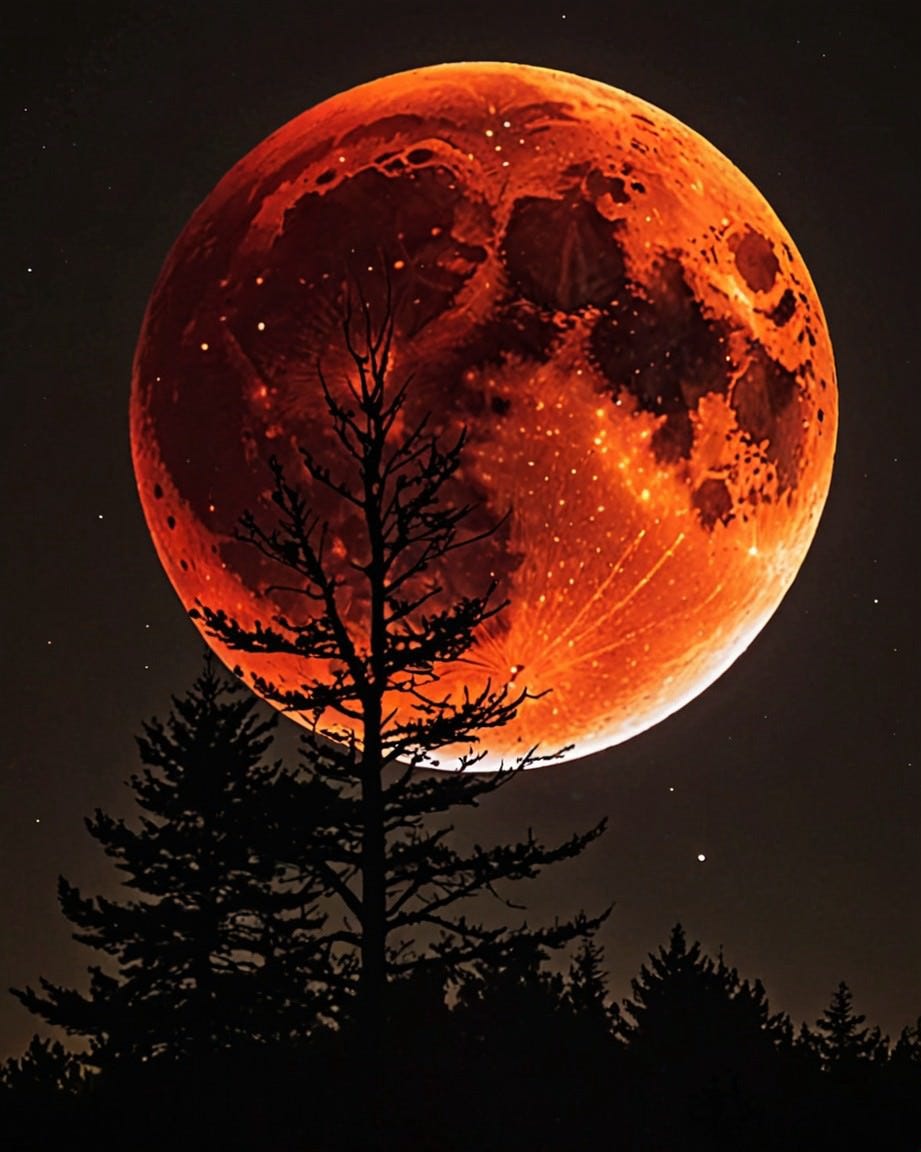


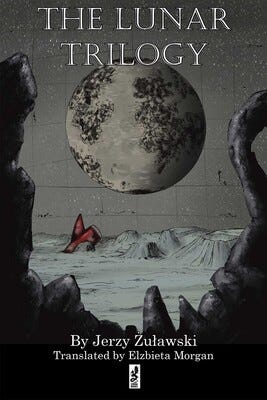

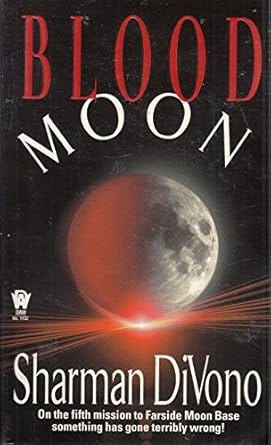
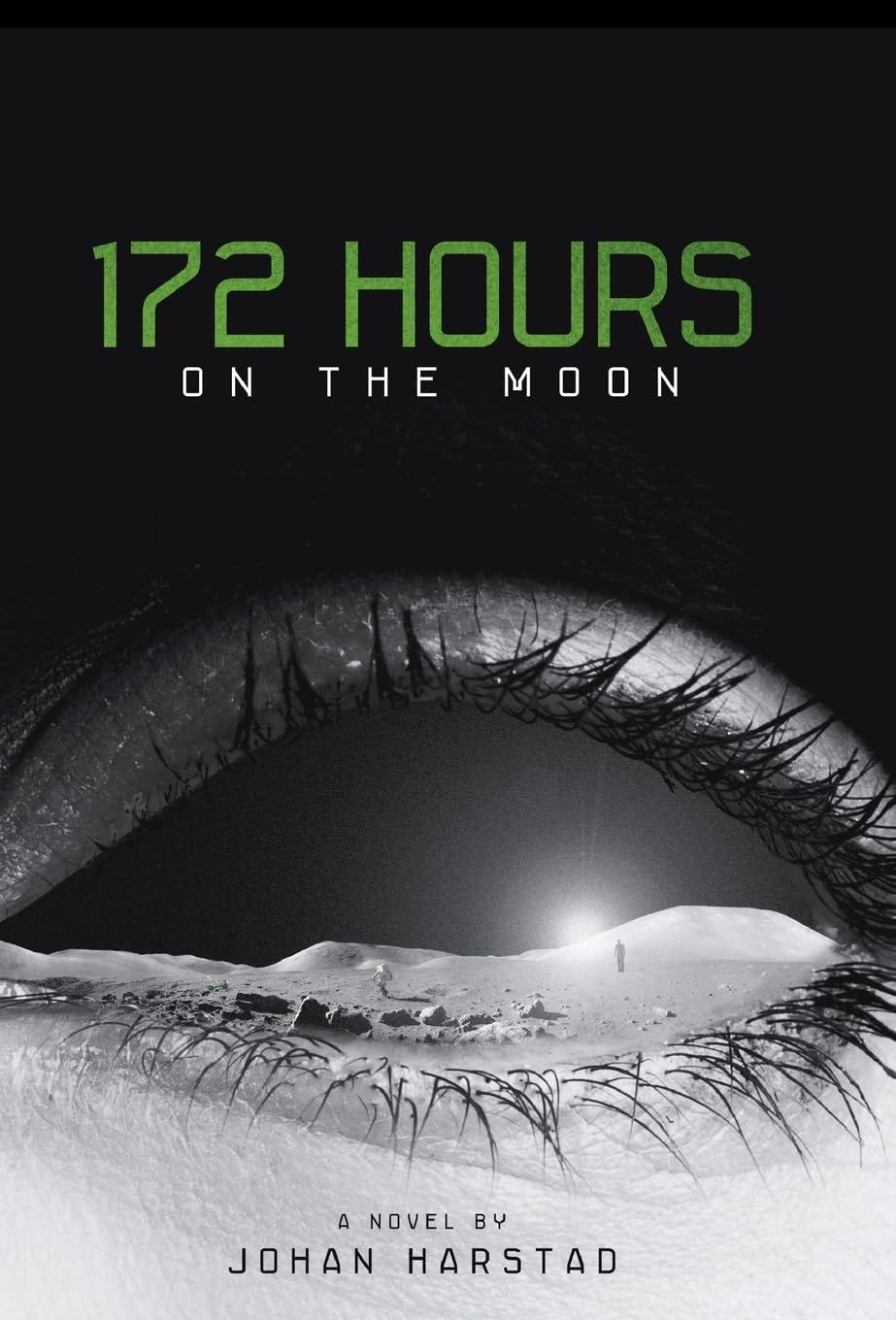
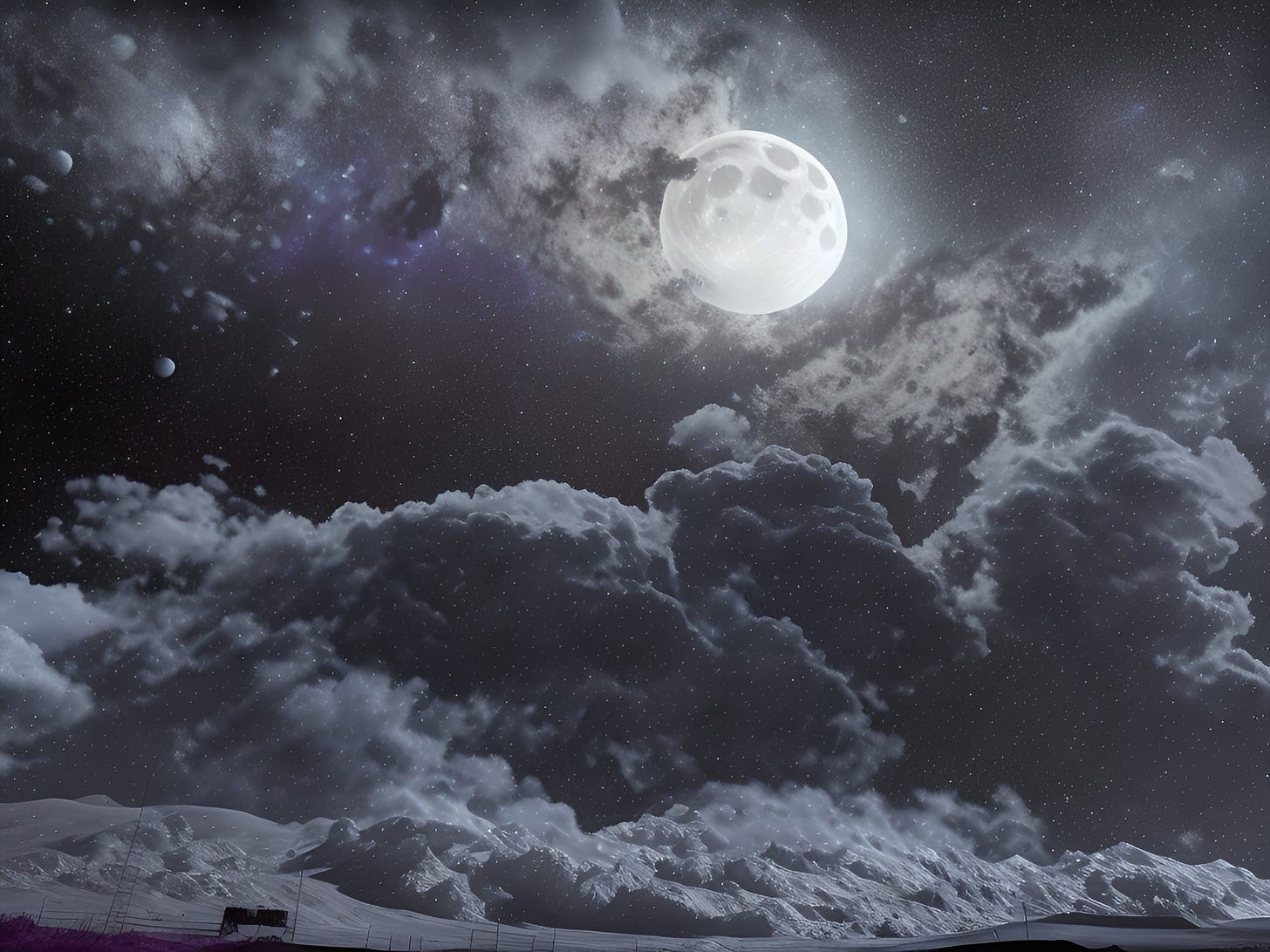
I am not sure others define “relaxing” as we do 🤣 but “Blood Moon” fascinated me. I’ll be seeking out “The Lunar Trilogy”. I love Space 1999 (well, season 1 mostly, and the graphic novel at least) and all things Lunar.